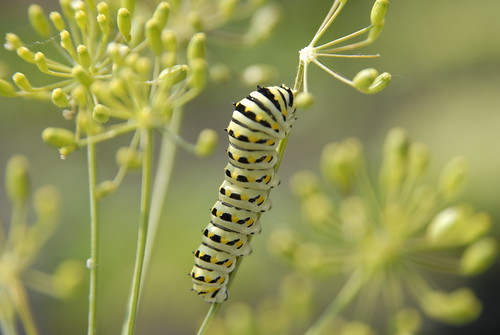Tip of the Week: Creating a Butterfly Garden
Posted in Gardening Tips on July 19 2010, by Sonia Uyterhoeven
 |
Sonia Uyterhoeven is Gardener for Public Education. Join her each weekend for home gardening demonstrations on a variety of topics in the Home Gardening Center. July 31 and August 1 she will present Butterfly Bonanza. |
 When we think of wildlife and gardening, sometimes the initial perception is that the two should remain separate, when the reality is that they are entirely interdependent. If you tell people to encourage insects into their garden, their nose often curls. Rephrase it and say “invite butterflies into your garden” and frowns turn into smiles.
When we think of wildlife and gardening, sometimes the initial perception is that the two should remain separate, when the reality is that they are entirely interdependent. If you tell people to encourage insects into their garden, their nose often curls. Rephrase it and say “invite butterflies into your garden” and frowns turn into smiles.
Aside from an appreciation of their beauty, why would it serve us to attract butterflies into the garden? Butterflies are second to bees as our most important plant pollinator. They are also sensitive to the environment and act as a good indictor of how healthy the environment is. From an educational standpoint, they provide a wonderful connection to the natural world and a way of teaching children the importance of the food web.
When you see a tiny winged creature flutter by, how can you tell if it’s a butterfly or a moth? Butterflies are active during the day, while moths are usually nocturnal. Butterflies have slim bodies, while moths are fat and hairy. When a butterfly lands, it rests with wings closed; moths rest with their wings open. Butterflies have antennae that are shaped like mini golf clubs; the antennae of moths are either feathery or straight.
If you have forgotten the biology of the butterfly, here is a brief summary of its life cycle. The adult butterfly lays eggs that hatch into caterpillars (larvae). The hungry caterpillars eat and grow until they reach a certain size, and then change into pupae (chrysalises). From this stage they transform into adult butterflies, completing metamorphosis. If you need a review, grab Eric Carle’s classic, The Very Hungry Caterpillar, from your toddler’s library.
Butterflies live from a few weeks to nine months or more, depending on the time of year and species. Butterflies are ectothermic (cold blooded), regulating their body temperature according to the ambient temperature. They need the heat of the sun to warm up and fly.
With this information, you can create a garden that will attract butterflies by providing for their needs.
- Plant your butterfly garden in a sunny, protected spot that’s not windy where the butterflies can bask yet quickly escape from predators such as birds, praying mantis, or spiders.
- Create puddles or pools as a source of water and minerals.
- Provide food and shelter for all phases of the butterfly’s life cycle—use plants the caterpillars prefer as well as those rich in nectar for the adult butterflies.
- Keep your garden free of pesticides and other harmful chemicals to ensure a safe environment.
- Choose plants that grow well in your climate. Many native species are so adapted and are more pest resistant as well.
Next week I will write about some of the plants preferred by caterpillars and butterflies.

